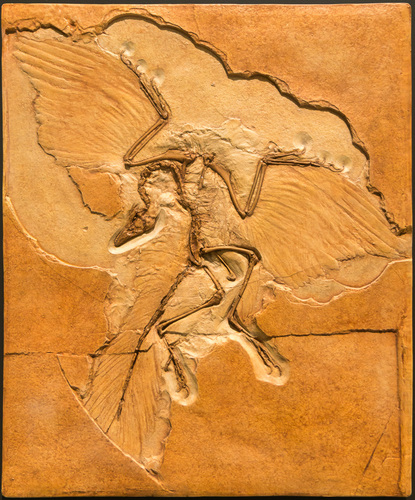
Archaeopteryx
Archaeopteryx lithographica bridges the gap between dinosaurs and birds with its feathered wings and reptilian tail. This Jurassic icon soared in lush, subtropical landscapes, showcasing the evolutionary leap towards avian flight, making it a pivotal figure in the story of life on Earth.
Black
Color
Characteristics
Archaeopteryx lithographica, often considered the first bird, lived during the late Jurassic period. It had both avian and reptilian features, including feathered wings, a long bony tail, and sharp teeth. Its habitat likely included subtropical islands with lush vegetation and shallow seas.
Distribution Range of the Archaeopteryx
Archaeopteryx lithographica is known from the Late Jurassic period, approximately 150 million years ago, primarily found in what is now southern Germany. Specifically, fossils have been discovered in the Solnhofen limestone deposits, which are part of the Bavarian region.
Archaeopteryx's Habitat
Environmental Conditions
During the Late Jurassic, the region that is now southern Germany was a subtropical archipelago, characterized by warm, shallow seas and numerous small islands. The environment included coastal regions with lagoons and tidal flat areas, where fine-grained limestone was deposited, creating ideal conditions for fossil preservation.
Ecological Niche
Archaeopteryx lithographica is believed to have inhabited environments where it could exploit both terrestrial and arboreal niches. Its anatomy suggests it was capable of flight or gliding, possibly moving between trees and the ground. This would have allowed it to hunt small prey such as insects or small reptiles, and possibly scavenge, indicating a versatile ecological role that bridged typical avian and reptilian behaviors.
Copyright @ Nature Style Limited. All Rights Reserved.
 English
English